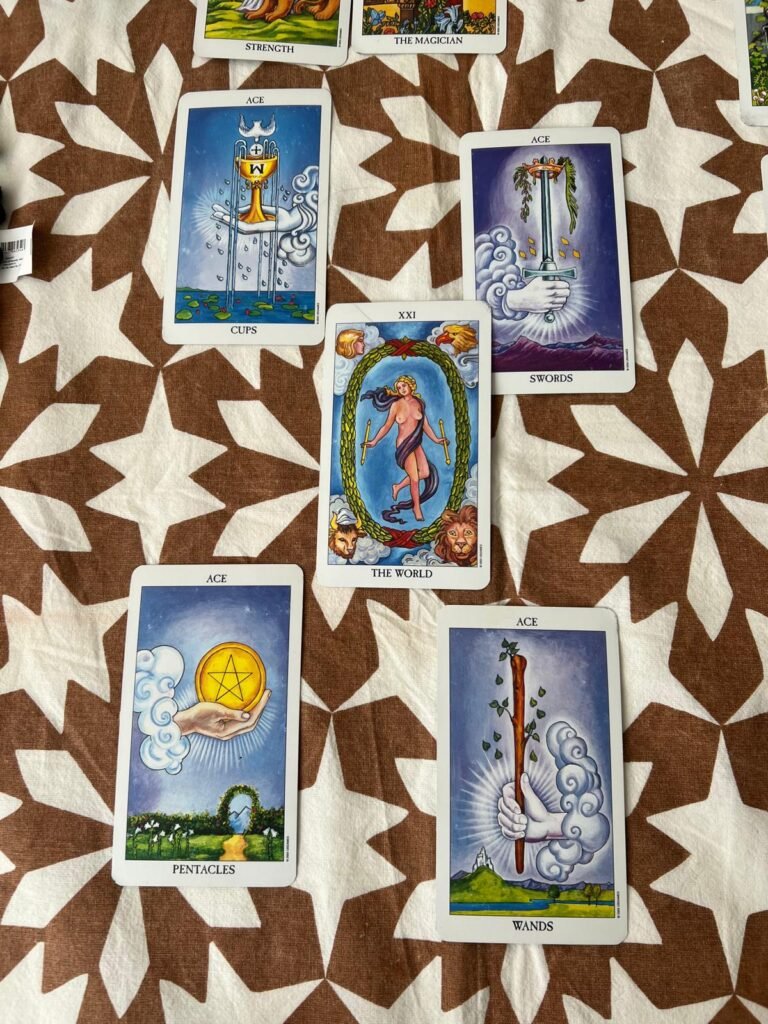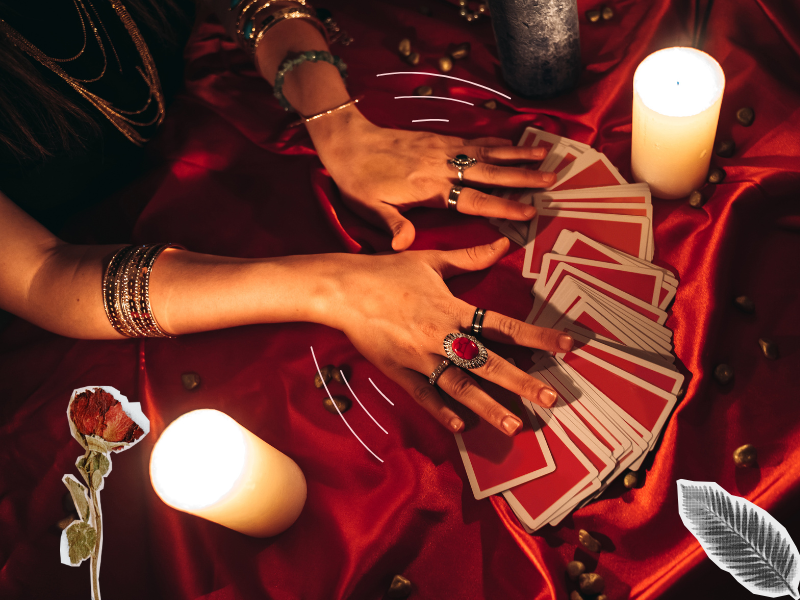If you grew up in a society where tarot was labeled as pagan, witchcraft, or something to fear—but deep down you feel curious about it—this blog is for you.
Therapeutic tarot isn’t about predicting the future. It’s about listening to your inner voice. For me, tarot arrived just in time—when migration, self-questioning, and rebuilding became inevitable.
In this post, I’ll share:
- What therapeutic tarot is
- The difference between therapeutic and predictive tarot
- How tarot is structured
- How to use it to understand emotional, mental, and spiritual patterns

Table of Contents
🌙 How Did Tarot Enter My Life?
Tarot came to me—I wasn’t searching for it. Was it synchronicity? Maybe.
At the beginning of this year, my life felt upside down. As we say in Colombia, “I hadn’t gotten out of one crisis before I was in another.”
(If you’re curious about that moment, I wrote a blog titled: The Purpose of Life is a Lie)
One day, after a hospital visit, many tears, and a coffee outing with friends, I found myself drawn to tarot—perhaps for a deeper purpose.
During that outing, I passed by a spiritual shop to get an oracle deck. I felt I needed help finding answers because clearly, I didn’t have them.
Living in the Netherlands, I often see spiritual decks in Dutch or English, but that day, a tarot deck in Spanish appeared before me.
Since that moment, tarot has become part of my life. I use it whenever I feel emotionally confused or want clarity. I even use it in therapy to explore themes I find hard to put into words.
What seemed like a migration crisis became a path toward exploring my fears, ego, and unconscious patterns.
🔮 Therapeutic Tarot vs Predictive Tarot
1. 🔍 Predictive Tarot
- Focus: Predicts future events
- Intention: Answers specific questions like “Will I get married?”, “Will I get hired?”, or “Will this relationship last?”
- Viewpoint: Cards are messengers of fate; the answer is already written
- Common spreads: Celtic Cross, yes/no spreads focused on outcome
- Drawback: Can create dependency and passivity, as the power lies outside of you
2. 🌿 Therapeutic Tarot (also called intuitive or symbolic tarot)
- Focus: Explores the present moment, emotions, and unconscious patterns
- Intention: Supports self-awareness, inner healing, and growth
- Viewpoint: Cards reflect what’s going on inside—not what will happen, but what’s ready to be seen
- Common spreads: “What am I being invited to work on in this relationship?” or “What keeps me from starting that project?”
- Advantage: Empowers the seeker to become the author of their path, not a passive spectator
📚 How Is the Tarot Structured?
A Quick History: From Game to Spiritual Tool
Tarot wasn’t born mystical. The first known card deck in the West came from the Islamic world, known as Mamluk, with suits representing symbolic elements: wands (earth), cups (water), swords (air), and coins (fire).
In 14th-century Italy, it became a popular game known as Tarocchi. It wasn’t until the 18th century that it took a spiritual turn, thanks to occultists like Etteilla, Eliphas Lévi, and the Hermetic Order of the Golden Dawn.
The Tarot Today
Modern tarot contains 78 cards:
- 22 Major Arcana – Archetypes like The Fool, The Empress, or The Hermit that mirror the soul’s journey through life.
- 56 Minor Arcana – Everyday life experiences divided into 4 suits:
- Swords (Air) – Mind, thoughts
- Cups (Water) – Emotions, intuition
- Wands (Fire) – Passion, energy
- Pentacles (Earth) – Material world, grounding

👉 Want to explore each archetype card-by-card? Let me know in the comments!
🧠 How to Use Tarot to Understand Emotional, Mental, and Spiritual Patterns
In society, we use symbols and signs to make sense of the world.
- Signs have fixed meanings (like the UN logo = United Nations).
- Symbols carry multiple meanings and are open to personal interpretation.
Therapeutic tarot works with symbols to help people express what’s often hidden in the unconscious. Most of what drives us is not conscious—it lives in the emotional and symbolic layers of our mind.
Because tarot speaks through images, it gives access to parts of us we can’t always articulate. In a reading, these images evoke stories, memories, and emotions. When the session is focused and intentional, it becomes a powerful mirror.
If you were raised in a Catholic or religious culture, you may have heard that tarot is evil or dark. But that depends on how you use it.
For me, tarot has offered perspective, clarity, and deeper insight. The cards don’t tell me what to do—they help me see what I already know deep inside.
✨ Final Reflections
Therapeutic tarot is not magic—it’s a tool for self-awareness. A map, a mirror, a way to reconnect with your intuition.
Its symbols have helped me see my emotional landscape, understand my fears, and face my shadow with compassion.
Would you like to learn more about therapeutic tarot? Let me know in the comments or connect with me on Instagram: @the_migrant_journey
We’re not here to predict. We’re here to remember.

